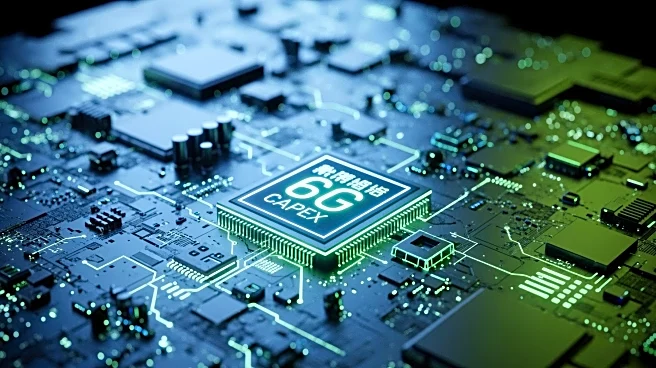What's Happening?
Dell’Oro Group has released a report forecasting that 6G-related radio access network (RAN) capital expenditures will begin ramping up around 2030. The report anticipates that these investments will account for 55-60% of total RAN investments between
2029 and 2034. Despite the upcoming focus on 6G, the global RAN market has shown limited growth potential, with revenues expanding at just 1% annually since 2000, and declining when adjusted for inflation. The report suggests that the RAN market will remain broadly flat through 2035, with the investment cycle led by Massive MIMO systems in the Sub-7GHz and centimeter-wave bands, primarily leveraging existing macro infrastructure. Stefan Pongratz, vice president of RAN and telecom capex research at Dell’Oro Group, noted that operators are in a strong position from a capacity perspective, which contributes to the stagnation in RAN market growth.
Why It's Important?
The anticipated ramp-up in 6G capex signifies a major shift in telecommunications infrastructure investment, potentially reshaping the industry landscape. As 6G technology becomes a focal point, operators may need to adjust their strategies to accommodate new deployment requirements and leverage existing infrastructure. This shift could impact various stakeholders, including telecom companies, equipment manufacturers, and service providers, who may need to innovate and adapt to remain competitive. The stagnation in RAN market growth highlights the challenges faced by operators in finding new growth catalysts, which could influence future investment decisions and technological advancements.
What's Next?
Operators and industry stakeholders are expected to prepare for the upcoming 6G deployment cycle, focusing on enhancing existing infrastructure and exploring new technologies. The report suggests that delays in 6G deployment may be driven more by market conditions than technological readiness. As the industry approaches the 2030 timeline, stakeholders will likely monitor data traffic trends and enterprise adoption of private wireless and fixed wireless access (FWA) to gauge the potential impact on RAN investments. The industry may also see increased collaboration and innovation to address the challenges posed by the flat growth in the RAN market.
Beyond the Headlines
The shift towards 6G capex could have broader implications for global connectivity and digital transformation. As 6G technology promises faster speeds and more reliable connections, it may drive advancements in areas such as smart cities, autonomous vehicles, and the Internet of Things (IoT). The focus on Massive MIMO systems and existing macro infrastructure could also lead to more efficient use of spectrum and improved network performance. These developments may influence regulatory policies and industry standards, shaping the future of telecommunications and its role in society.













